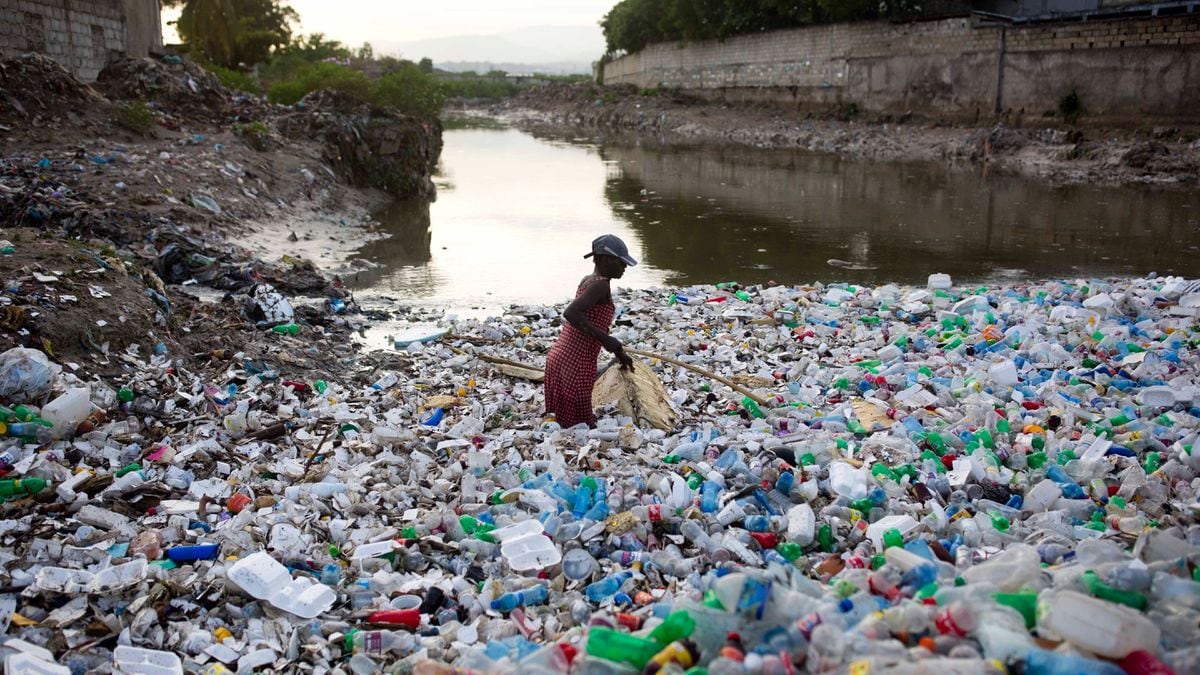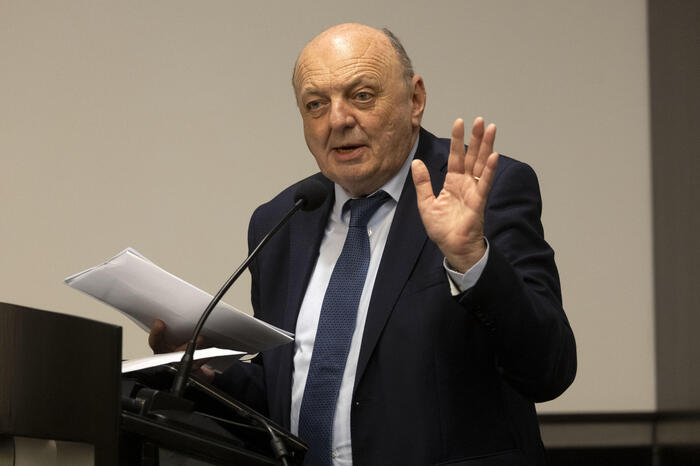Social News
Written by: Golden Chess
2021-01-26 08:00
Last update date: 2021-01-26 08:00
In 2020, Hong Kong has experienced a year of repeated COVID-19 pandemics. The "table restriction order" and the ban on dine-in in the evening market have caused many citizens to switch to takeaway.
The takeaway life in the past year has caused a large amount of disposable plastic tableware waste.
You Huan Tuan estimated that the number of disposable tableware such as plastic knives and forks discarded in Hong Kong last year was equivalent to 15 billion pieces.
Used masks are also a large amount of waste generated during the epidemic. According to the government's calculation, a total of 1.46 billion to 2.19 billion masks were discarded in Hong Kong in the past year.
A styrofoam recycling organization pointed out that since July last year, the daily recycling volume of styrofoam lunch boxes has soared by more than 60%, reaching 250 kilograms, describing that "it explodes so badly, many times it will be OT until 9 o'clock in the evening. Hard food to do at 10 o'clock."
The organization hopes that when the government implements the ban on dine-in food, it can promote the recycling of tableware and lunch boxes after washing them through official channels.
Some environmental protection groups have bluntly stated that unnecessary packaging has also increased dramatically during the epidemic. "If you can't even see the appearance of your own objects, the most common ones are fruits."
The ring team believes that it is safer for citizens to bring their own tableware every day, and they can also lead a "plastic" life in the face of the epidemic.
[Seventh of a series of reports on the first anniversary of the fight against the epidemic]
"Plastic under the epidemic" series:
Going Plastic under the Epidemic | OL Brings Food to Colleagues, Saves Hundreds of Gum, Vegetarians: The Epidemic is a Test of Environmental Protection
Plastics under the epidemic | General response to the promotion of takeaway boxes
During the epidemic, masks have almost become a daily necessities of the citizens. The government estimated that the working population was about 4 million last year. It is estimated that 4 million to 6 million masks are consumed every day in Hong Kong.
Since the outbreak of the epidemic in Hong Kong at the end of January last year, it is estimated that a total of 1.46 billion to 2.19 billion masks were discarded in Hong Kong in the past year. The masks discarded in landfills last year weighed about 3,430 to 5,145 tonnes.
In addition, in August last year, the environmental protection group Green Earth conducted a survey of disposable tableware in 48 restaurants in Hong Kong, Kowloon and the New Territories.
Huan Tuan found that after the implementation of the ban on food, the number of takeaways increased by an average of 50 to 3 times compared with before the epidemic.
Based on the calculation of 10 billion disposable plastic cutlery (calculated by dividing the total weight of the plastic cutlery) discarded every year in Hong Kong in 2018, during the anti-epidemic period this year, the number of disposable cutlery can be as high as 15 billion.
+2
+2
+2
Recycling mechanism: the volume of styrofoam is stacked up to the ceiling
"Lost Treasure: Styrofoam Recycling Action" is one of the few organizations in Hong Kong that recycles styrofoam waste. The styrofoam will be sorted, broken, and thermally compressed, and then sold to downstream recycling companies for the pelletizing process.
In its workshop, the recovered styrofoam almost occupies most of the space in the workshop, and it is stacked up to the ceiling. During the visit, the recovered styrofoam was sent to the workshop continuously.
Li Jiaming, the institutional project manager, pointed out that due to the impact of the epidemic, the amount of recycling was once greatly reduced.
Li estimated that during the first two waves of the epidemic, although citizens often used styrofoam lunch boxes, they avoided going out or "stored the lunch boxes in the house first." The amount of styrofoam recycled by the organization at that time included lunch boxes. The number was only about half before the outbreak.
However, after July last year, the overall styrofoam recycling volume began to rise. From the previous 150 kg daily recovery, an increase of about 100 kg reached the level of 250 kg, an increase of nearly 67%.
+4
+4
+4
Since the government imposed a ban on eating in the evening market, many "family without meals" have been forced to switch to takeaways. Li Jiaming believes that "many families have introspected because there are really many lunch boxes for every meal. Don't just use styrofoam. The amount of garbage really appeared in front of everyone, and there was a sense of fright."
Li said the agency received more and more inquiries about the recycling of styrofoam.
As for the recycled styrofoam lunch boxes, they are considered clean as a whole. "Many citizens are very cooperative. They are clean and free of food residues."
He said that only "one time and a half time" was found, and it was discovered that some citizens had discarded the entire uneaten lunch box in the collection point.
Even with the rapid increase in the volume of recycling, Li Jiaming believes that the proportion of the whole meal boxes recovered is just "mosquito small", and a large number of meal boxes are discarded.
He also said that since last June, the government arranged recycling stations such as "Green in the District" to help collect styrofoam waste. So far, two-thirds of the "Green in the District" and other recycling points will send the styrofoam to the "lost". "Treasure" processing.
However, the organization still hopes that the government can promote it through official channels, and that the tableware and lunch boxes must be cleaned and recycled.
Ren Chen Kechun believes that under the epidemic situation, it is more necessary to "go plastic", and it is recommended that citizens bring their own environmental bags and food boxes to go out.
(Photo by Lu Yiming)
In the anti-epidemic life, environmental protection seems to be an "impossible task."
Chen Kechun, the director of the environmental protection group Greenpeace Project, believes that life in the epidemic needs more "out of shape".
She pointed out that due to the epidemic prevention, there are already many disposable items necessary to protect hygiene and health. "It is of course inevitable to be safe, but at the same time there are a lot of unnecessary packaging or disposable tableware, and we need to work hard to reduce it." .
Chen Kechun said that many citizens have switched to disposable tableware due to concerns about the risk of infection. However, the tableware is left in the hands of the citizens after leaving the factory, packaging, and transportation. "There is one thing that I did not know. If you don’t wash it beforehand, the risk is all right. ".
She believes that the most reassuring way is to bring your own tableware. "Wash it by yourself from start to finish. It is safest to use your own set, and it can be plasticized."
Chen Xu said that in addition to the sharp increase in the use of disposable tableware, there is also a general increase in non-essential packaging of goods during the epidemic.
For example, she pointed out that many bakeries changed each bread into a separate bag, and supermarkets also wrapped the unpackaged fruits and vegetables in plastic. "There is no way to feel the face of the object. The most common one is raw Fruits".
She believes that "walking plastics" must rely on self-discipline of the public and bring their own environmental bags and food boxes to go out.
On the other hand, she suggested that the government and enterprises go one step further and provide an unpackaged version for the public to choose. "For useless packaging, you can first avoid the package." In the medium term, materials that cause greater pollution, such as foam, must be eliminated. Glue etc.
Hezui now has over 300 French volunteers with 100 kilograms of styrofoam carrying 3 tons of garbage: waste reduction at source is the most important
Seventy couples in Tai Po were complained that they were obstructing the street food ring law enforcement for recycling styrofoam boxes. 400 plastic boxes dropped off the landfill
Over 80 tons of styrofoam are discarded every day. The legislation to ban plastic tableware research for 19 years is still not the time?
[Styrofoam fence] More than a thousand styrofoam boxes besieged trucks and will be cleaned after the long holiday in the mainland
Government canteens will stop supplying styrofoam lunch boxes this month, and drinking straws will be extended to restaurants in various departments during the year
01News
Environmental protection, plastic life, green peace



/cloudfront-eu-central-1.images.arcpublishing.com/prisa/BUA2NNBCCBACHEPXXR6NIRKCA4.jpg)





